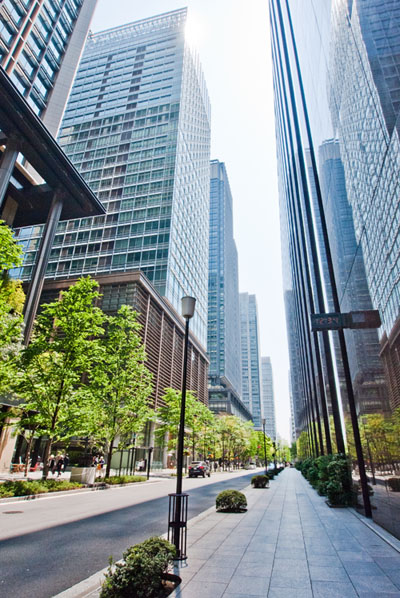Residential yields and vacancy rates in Minato-ku - June 2014

According to real estate listing site Homes, the average gross yield on an apartment in Minato-ku in June was 5.3%, showing no change from May but down 1.9 points from June 2013. The average gross yield across Tokyo was 7.2%, up 0.1 points from May but down 1.1 points from June 2013.Read more
Residents asked to move out of Yokohama apartment building after construction fault discovered

Sumitomo Realty & Development are asking residents of an 11-year old condominium apartment building in Yokohama City to move out after it was recently discovered that the building is starting to lean as the foundation piles might not have been sunk deep enough to reach bedrock. Sumitomo said they cannot guarantee the safety of the building and are considering either reinforcing or demolishing and rebuilding the apartment block.Read more
Out-of-date land titles slowing down redevelopment in Tohoku

Reconstruction and relocation efforts in the disaster-hit areas in Tohoku are being stalled as out-of-date property records are making it close to impossible to locate landowners.
In the town of Otsuchi in Iwate Prefecture, over half of the homes were either severely damaged or completely destroyed in the 2011 disaster. Barely any progress has been made on reconstructing the town and almost 4,100 residents (40% of the town’s population) are still living in temporary accommodation. Read more
Mitsubishi Jisho to start renovating old office buildings
 Mitsubishi Jisho Residence announced that they are entering the building renovation business. With the cooperation of their subsidiary MEC eco LIFE Co. as well as Real Tokyo Estate, Mitsubishi plan to rent entire buildings from owners, carry out refurbishments, including earthquake-retrofitting, and then offer the newly made-over spaces for rent.
Mitsubishi Jisho Residence announced that they are entering the building renovation business. With the cooperation of their subsidiary MEC eco LIFE Co. as well as Real Tokyo Estate, Mitsubishi plan to rent entire buildings from owners, carry out refurbishments, including earthquake-retrofitting, and then offer the newly made-over spaces for rent.
The owners of older office buildings can have a difficult time attracting tenants and such buildings tend to have high vacancy rates. As such, landlords of buildings with little-to-no rental income are less inclined to carry out renovations on their own.Read more
Kudan Kaikan (c1934) to be demolished

The government-owned Kudan Kaikan building in Chiyoda-ku may soon be demolished as the Liberal Democratic Party announced a plan to lease the facilities and land to a private developer in return for redeveloping the site.
The property had been used by the Nippon Izokukai (Japan War-Bereaved Families Association) since the 1950s. The other facilities, such as the hotel and restaurants, have been closed since April 2011.Read more
Could foreign buyers ruin Tokyo's improving property market?
 The market for brand new apartments in central Tokyo is undoubtably strong at the moment with many buildings selling out before completion.
The market for brand new apartments in central Tokyo is undoubtably strong at the moment with many buildings selling out before completion.
Those in the real estate industry, however, are nervous as to how long the positive conditions will continue. Why? The momentum at the beginning of 2014 has been a little weaker than it was the same time last year. Another cause for concern has been the growing interest from foreign buyers.Read more
Higher rents and lower vacancy rates expected for Tokyo’s office market
 Central Tokyo’s office market is experiencing a rebound as vacancy rates drop to their lowest level since 2009. According to Miki Shoji, the vacancy rate in Tokyo’s central five wards (Chiyoda, Chuo, Minato, Shinjuku and Shibuya) was 6.70% in March - the first time it had fallen below 7% in 4 years and 10 months. In April, it dropped a further 0.06 points to 6.64%.
Central Tokyo’s office market is experiencing a rebound as vacancy rates drop to their lowest level since 2009. According to Miki Shoji, the vacancy rate in Tokyo’s central five wards (Chiyoda, Chuo, Minato, Shinjuku and Shibuya) was 6.70% in March - the first time it had fallen below 7% in 4 years and 10 months. In April, it dropped a further 0.06 points to 6.64%.
As market conditions and business outlooks improve, demand is growing from companies looking to locate their operations in earthquake-resistant buildings in the centre of the city. Read more
